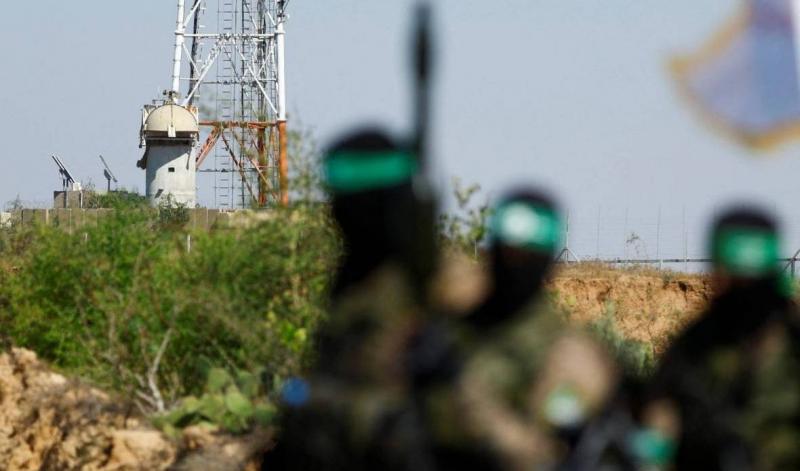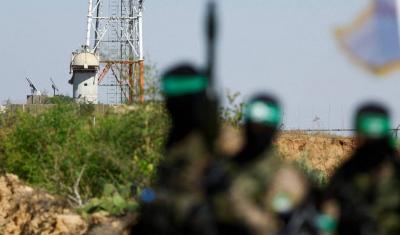Has Israel come closer to achieving its goal of eradicating Hamas, or is the movement rebuilding itself? These are two questions that arise following the Israeli army's announcement regarding the number of Hamas casualties over ten months of war in the Gaza Strip, amidst ongoing battles in some areas.
Hamas does not provide figures on its fighters, while estimates suggest that the number was between 30,000 and 40,000 at the outbreak of war on October 7. According to the International Institute for Strategic Studies, the Izz ad-Din al-Qassam Brigades, Hamas's military wing, had between 15,000 and 20,000 fighters, whereas the Israeli National Security Studies Institute cites 15,000 members. Israeli military and strategic expert Colonel Moshe Elad confirms that Israel has succeeded in eliminating 22 out of 25 Hamas brigades in the Gaza Strip. He states that the Israeli army has managed to eliminate 17,000 Hamas elements and other fighting factions in Gaza.
Similarly, Israeli military and strategic expert Kobi Lavi discusses the Israeli forces' success in " dismantling Hamas brigades" in Gaza. He notes that the "infrastructure and organizational capabilities of Hamas brigades" have been dismantled, but there are "activists and individuals" aiming to "restructure the movement," launching rockets towards Israel from certain areas in the Gaza Strip, according to his statement to Al-Hurra.
Moreover, Israeli political analyst Eddy Cohen points out that Israeli forces have managed to " dismantle Hamas" and eliminate most "high-ranking leaders," but they have "not yet eradicated the entire movement." He estimates that "90 percent of Hamas's military capabilities" have been crippled, with some remaining elements still firing at Israel intermittently.
On the other hand, Palestinian military and strategic expert Major General Wasef Erekat asserts that Hamas and Palestinian factions "are still present, fighting, and conducting operations causing painful strikes against the Israeli army." He states to Al-Hurra that the Israeli army "has failed to achieve its declared objectives of eliminating Hamas or freeing hostages through military force."
In this context, Palestinian political analyst and head of the European Council for International Relations and Consultations based in Paris, Adel Al-Ghoul, emphasizes that "if the confirmation of 17,000 Hamas casualties is true, this does not mean it is finished militarily." He notes that the number of Izz ad-Din al-Qassam Brigade members exceeds 40,000, indicating that more than half of the members of Hamas's military wing are particularly "underground in tunnels." He points out that 20 to 30 percent of these elements have fallen during ten months of war, with "new fighters" being recruited daily as many young individuals lose their families, creating "a significant hatred" towards the Israeli army.
On Thursday, the Israeli army announced that it has "eliminated over 17,000 terrorists" since the outbreak of war with Hamas and other Palestinian factions in the Gaza Strip more than ten months ago.
Strikes and Declining Military Capabilities
The "World Factbook" published by the U.S. Central Intelligence Agency (CIA) reveals that Hamas "obtains its weapons through smuggling or local manufacturing and receives some military support from Iran." During the war in Gaza, Hamas's arsenal of rockets and shells, which was previously estimated to be between 15,000 and 30,000, has been significantly depleted. Israeli army estimates indicate that at least 13,000 rockets have been fired, and Israeli forces have seized caches of shells during their incursion into Gaza.
Hamas has undoubtedly suffered painful blows, losing many of its military leadership and having several brigades dismantled, but it has not been militarily eradicated, and Israel has been unable to eliminate it, especially as the movement has changed its "tactics" and resorted to "individual group tactics and street warfare" with a mentality of "strike and withdraw."
In the Gaza Strip, fighting has become more widespread in various unorganized areas as Hamas turns to guerrilla warfare conducted by small groups of fighters. A previous study by CNN revealed that the military wing of Hamas consists of 24 brigades, and the Israeli army has managed to destroy some of these brigades. According to the study, in collaboration with the American Enterprise Institute (CTP) and the U.S. Institute for the Study of War (ISW), there are 8 brigades of Hamas that "are still effective in fighting against the Israeli army and capable of defending their territory using advanced methods and weapons." Meanwhile, 13 brigades have seen a decline in their combat capabilities but can still conduct smaller and less successful attacks similar to guerrilla warfare.
Hamas acknowledges that the war may prolong, thus "not deploying all its strength against the Israeli army." At the same time, it is "rearranging its cards and rebuilding its strength," although it has been "fatigued" by the loss of many of its fighters and military capabilities, according to the Palestinian political analyst.
A former Israeli army colonel says, "You can kill members of the organization, but it is hard to kill belief and ideology." He indicates that "Hamas has received a very strong blow as an organization, but if Israel wants to continue its victory, it must pursue an international agreement that will include the next day in the Gaza Strip."
Hamas would suffer a severe defeat only if another party controls the territory, provided that "it does not carry the ideology of the movement," according to the Israeli military and strategic expert.
Reiteration and Persistence
Israel has reaffirmed its primary objective in the war in Gaza, which is to "destroy Hamas," designated as a terrorist organization in the United States and other countries, while specialists debate strategies to achieve this amidst the movement's reliance on "an ideology that is hard to eradicate."




